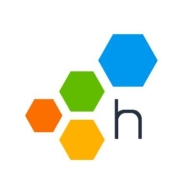

Splunk Observability Cloud and Honeycomb.io compete in the observability market. Splunk Observability Cloud seems to have the upper hand in scalability and comprehensive data analytics, while Honeycomb.io stands out for its innovative debugging capabilities.
Features: Splunk Observability Cloud provides extensive data analytics, real-time alerts, and advanced dashboard capabilities. Its flexibility is enhanced by a wide range of integrations. Honeycomb.io features event-driven architecture, powerful query capabilities, and granular analysis, which ensures faster resolution of complex issues.
Ease of Deployment and Customer Service: Honeycomb.io offers a user-friendly deployment model and strong support, simplifying setup and integration. Splunk Observability Cloud provides comprehensive support but is more complex to deploy due to its vast options.
Pricing and ROI: Splunk Observability Cloud has higher initial setup costs due to its expansive features but delivers significant ROI in large-scale deployments. Honeycomb.io offers a cost-efficient setup with robust capabilities, providing a compelling ROI for organizations with budget constraints and rapid deployment needs.


Many offerings tout observability. How is Honeycomb different? We have defined what Observability is and have built a tool to help modern Dev, DevOps and Site Reliability Engineering teams operate more efficiently. Because it’s all about delivering high quality code, maintaining reliability and getting precious time back.
We made a critical decision to provide a seamless, current view of your system (from logs to events and traces) in a single data store, regardless of how complex your architecture is. This means you no longer have to toil with multiple tools or stitched-together solutions – burning time as you address issues affecting users.
We also believe strongly that optimizing systems and debugging should not be difficult and draining, freeing up more time to ship new code. Our approach emphasizes efficiency and knowledge sharing, thereby elevating everyone’s game and ultimately business outcomes.
Splunk Observability Cloud combines log search, data integration, and dashboards for seamless monitoring, enhancing infrastructure visibility and security. Its cloud integration and scalability support diverse environments, improving operational efficiency.
Splunk Observability Cloud offers comprehensive monitoring tools with user-friendly interfaces, enabling end-to-end infrastructure visibility. Its real-time alerting and predictive capabilities enhance security monitoring, while centralized dashboards provide cross-platform visibility. Users benefit from fast data integration and extensive insights into application performance. Despite its advantages, improvements could be made in integration with other tools, data reliability, scalability, and cost management. Users face challenges in configuration complexity and require better automation and endpoint protection features. Enhancing AI integration, alerts, and adaptation for high-throughput services could further improve usability.
What are the key features of Splunk Observability Cloud?In industries like finance and healthcare, Splunk Observability Cloud is implemented for application performance monitoring and infrastructure metrics. Its ability to track incidents and analyze machine data benefits network infrastructure, while distributed tracing and log analysis aid in tackling security threats. Organizations often integrate it for compliance and auditing purposes, enhancing visibility into network traffic and optimizing performance.
We monitor all Application Performance Monitoring (APM) and Observability reviews to prevent fraudulent reviews and keep review quality high. We do not post reviews by company employees or direct competitors. We validate each review for authenticity via cross-reference with LinkedIn, and personal follow-up with the reviewer when necessary.